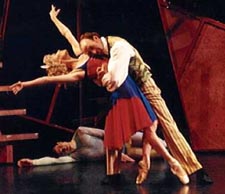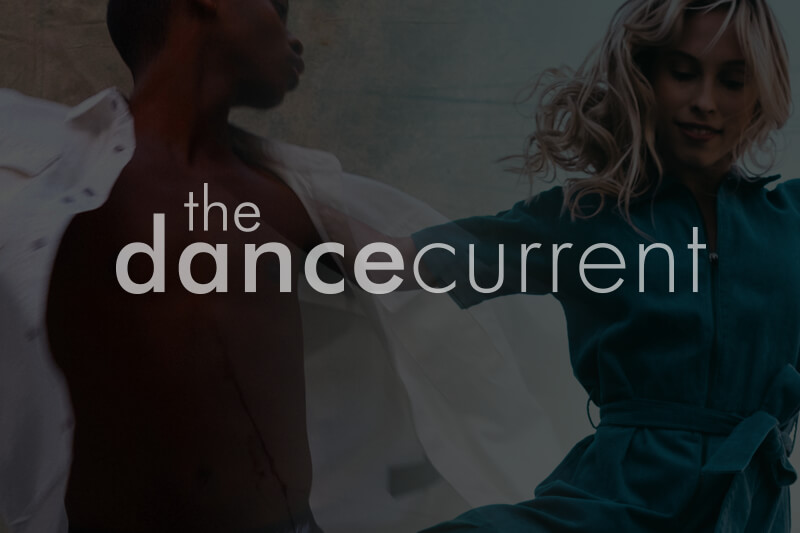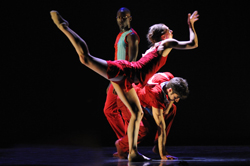On February 28th, Toronto’s Ballet Jörgen Canada made a stop in Coquitlam, British Columbia, a suburb thirty minutes east of Vancouver, with its production of “Coppélia”. The second-to-last stop in a tour of smaller communities around BC, this performance of “Coppélia” was a rare dance event for the Evergreen Cultural Centre (typically home to theatre and music), an intimate, 250-seat theatre opened in 1996. Choreographed by Bengt Jörgen, with set and lighting by Glenn Davidson and costume design by Gary Dahms, “Coppélia” is a colourful, enchanting, full-evening ballet. A unique mix of classical and contemporary dance blended with theatrics and bit of humour, maintains audience interest from beginning to end.
One of the best known comedy ballets, the original version of “Coppélia” debuted on May 25th, 1870, at the Paris Opera, with choreography by Arthur Saint-Léon and music by Léo Delibes. Delibes’ romantic, lyrical score is also the soundtrack for Jörgen’s production. Like Saint-Léon, Jörgen derived the ballet from E.T.A. Hoffmann’s story, “Der Sandmann”; however, Jörgen also took inspiration from the mythical love story of Pygmalion and Galatea. At first glance, the stage seems somewhat claustrophobic with large props leaving what appears to be little room to dance. However, the dancers perform comfortably in close quarters and deliver the show with ease. Perhaps restricting full amplitude in travelling sections of choreography, the intimacy of the stage adds to the charm of the work — enveloping the audience in the choreography and the story, without the distractions that can pull one’s eye in a larger theatre. The presentation in a smaller theatre also enhances the audience’s appreciation of the work by providing the opportunity to see the movement up close.
Catching, but not overpowering, costumes establish the playful yet dramatic mood of the story. Dr. Coppélius, portrayed by Jörgen, begins the first of three acts in the piece. Klara and Nathanael (Swanilda and Franz in the original version), danced by Tara Butler and Paul-Anthony Chambers respectively, are prominent through the entire piece, with Dr. Coppélius joining the choreography more in the second and third acts. The character of Coppélia, depicted by Angel Wong, does not receive a lot of actual “dance time” in the work. The remaining company members combine to perform the rest of the characters in the story. While often simply sitting on stage to watch the story of the three main characters unfold, they do have their moments of group movement to balance out the choreography.
After a quick pause, with the curtain closed, Act II begins with a visual bang. The modest, pastel colours of the set and previous costumes are suddenly jolted by Dr. Coppélius’ “creatures”: One Arm Bandit, Tweedy Bird, Spanish, Electric Guitar, and Green Monster. The striking primary colours and modern, geometric costume designs and masks strike the eye. The dancers do not seem to be troubled by what must be severely restricted vision through the masks.
The blend of dance styles is accentuated by a conscious use of the dance space, providing an assortment of visuals to keep the audience wondering, “what’s next?” This is an effective tactic for audiences that may be new to, or less knowledgeable about, dance, either classical or contemporary. Following the company’s mission to offer “innovative and accessible artistic programming to and for all communities”, “Coppélia” is a charming little production and a successful vehicle for bringing dance to smaller centres that might not otherwise have the opportunity to see a national company. Initiatives such as offering discount tickets to youth aged fifteen through twenty-five and a “meet the dancers” experience after the show, are certainly in line with the philosophy of “access”.
Accessible, as well, is the piece itself — something for both the contemporary and classical dance patron (and perhaps even the theatre-goer), as well as the audience member who may be watching dance for the first time. Overall, Jörgen’s version of “Coppélia” is an enjoyable and clever evening of dance. I found myself leaving the theatre with a feeling of satisfaction and an enhanced appreciation for the art form. Co-produced by Ballet Jörgen Canada and the Hong Kong Ballet, “Coppélia” will continue its tour this spring with destinations throughout Saskatchewan, Atlantic Canada and Ontario.
Comments:
Ballet Jörgen Canada brought their production of — Coppelia to Hamilton back in February and I consider myself very fortunate to have seen such a fine company. This group of artists really seems to work well together, and conveys a sense of sincerity that is often lacking in other troupes and associations that I have seen. The performance would have been even more enjoyable if it had not been danced to pre-recorded music.
It is interesting to see that for the performance reviewed in the article above, they chose a 250-seat venue. When the production was brought to Hamilton, they performed in the Great Hall of Hamilton Place, which seats around 1500. Unfortunately only 500-600 people attended, and those who were seated in the balcony were quickly moved to the front. Otherwise, the theatre would have looked quite empty. Hamilton boasts a beautiful 750-seat facility in the Dofasco Centre For the Arts. They have a wonderful crew and are well equipped.
It would seem to me that the dance community should do a better job in promoting this company. Hamilton is a tough audience for dance, but my fellow dance lovers here really didn’t know much about the company. The show wasn’t even a topic of conversation amongst many people who regularly travel down the highway to Toronto for performances.
Of course I will be watching closely for their upcoming performances. And I may even go to Kitchener to see their annual “Nutcracker” tour.
Sean Webb
Hamilton, ON
Tagged: Ballet, Performance, BC , Coquitlam






